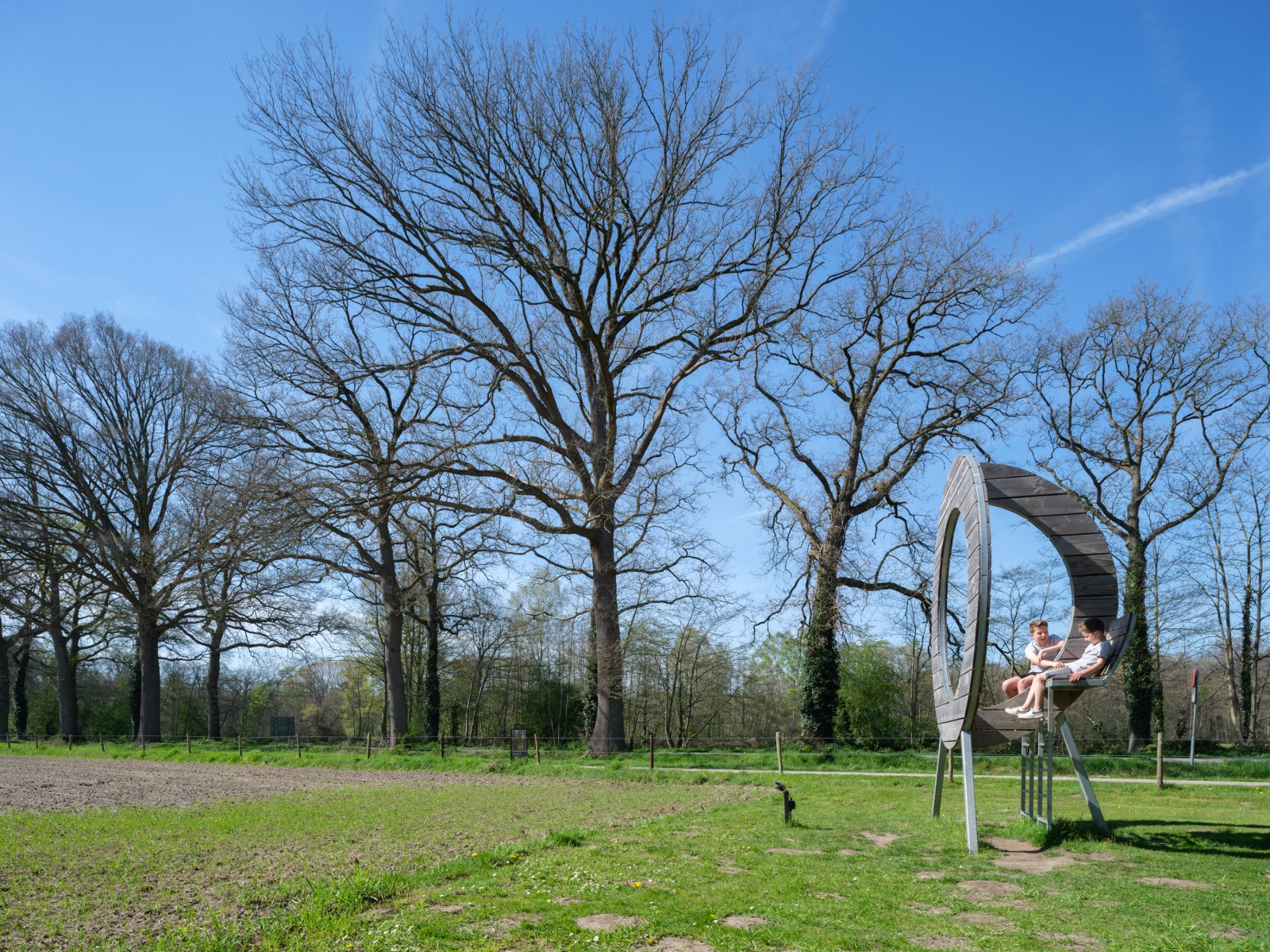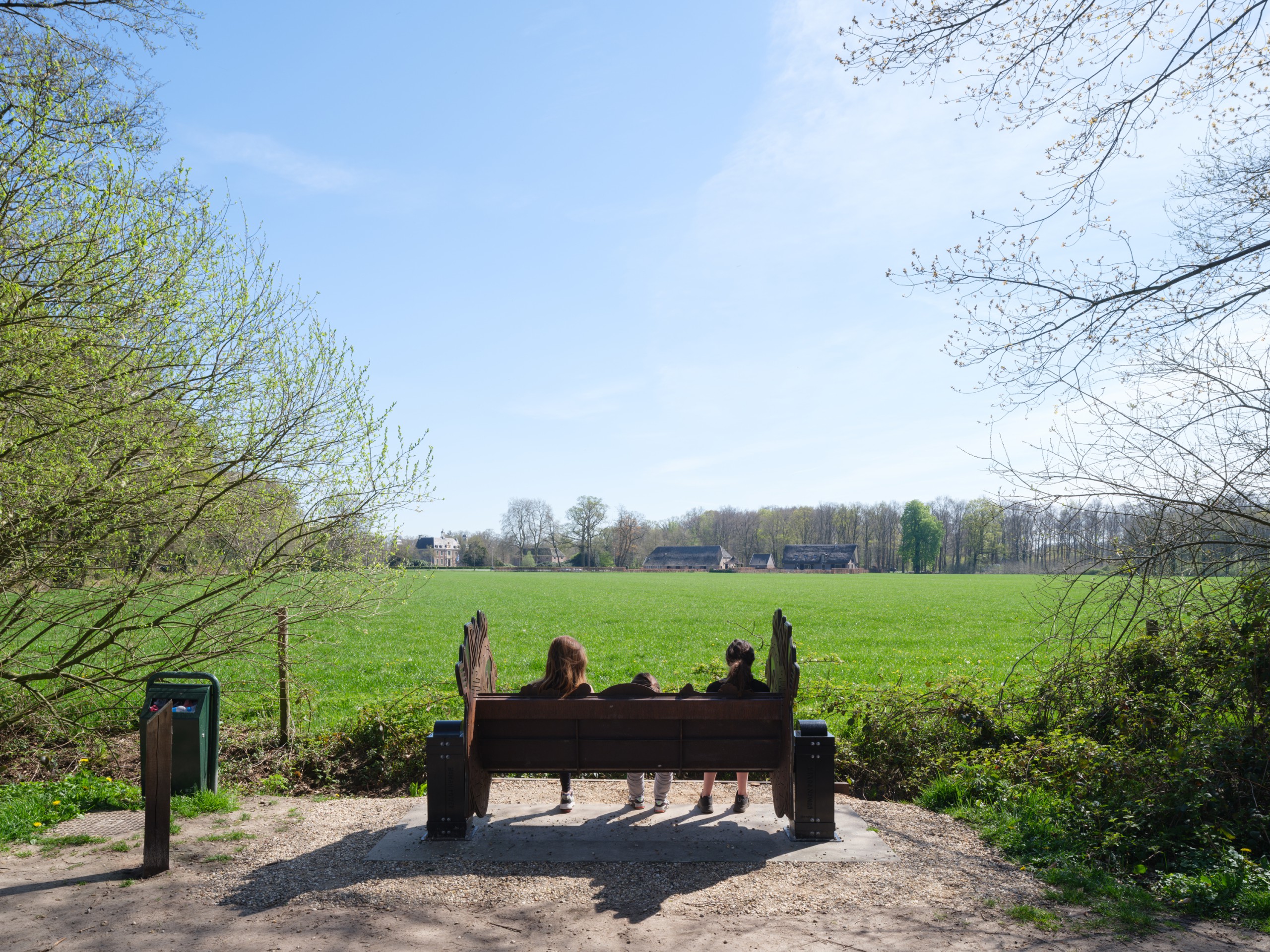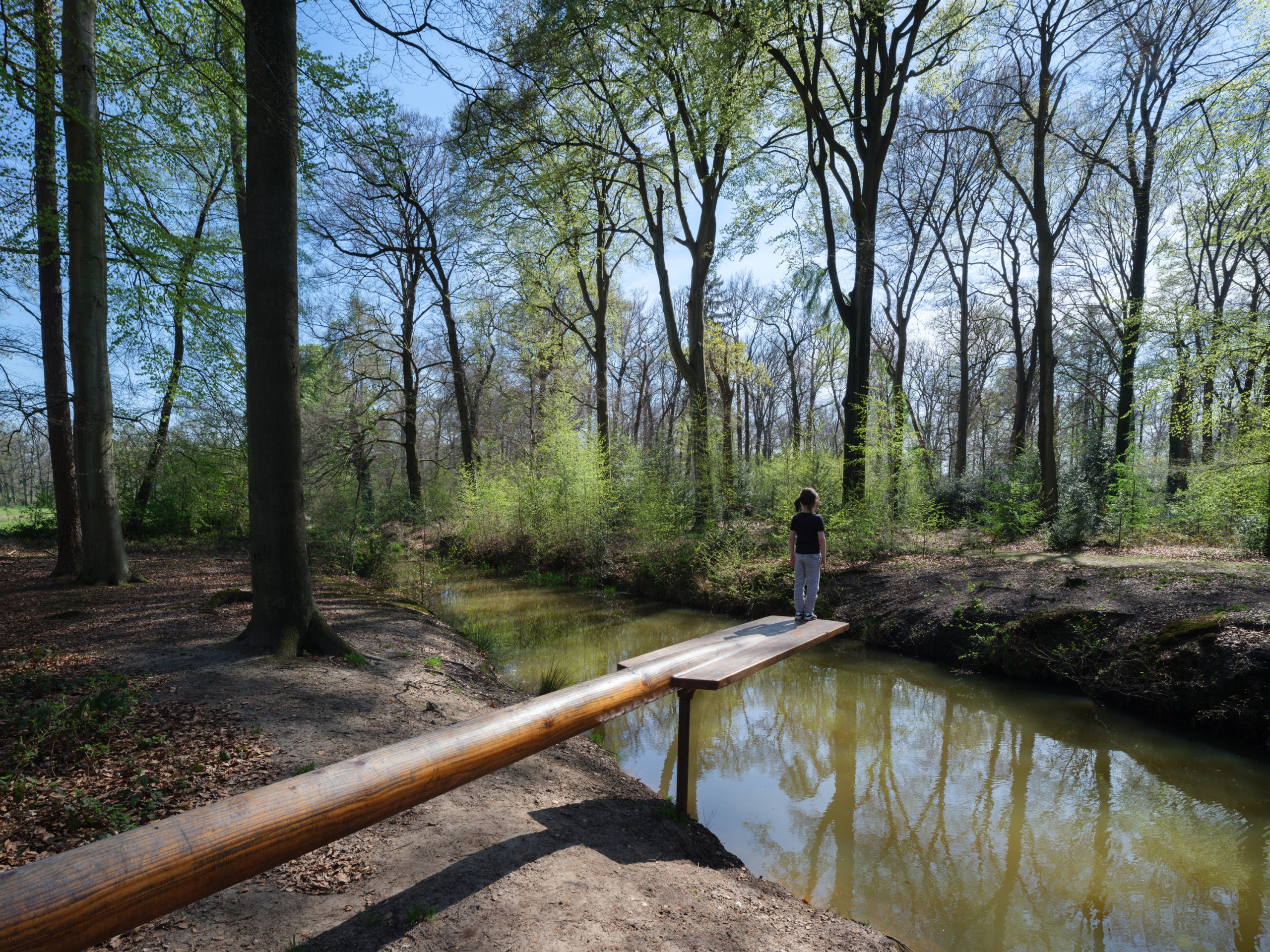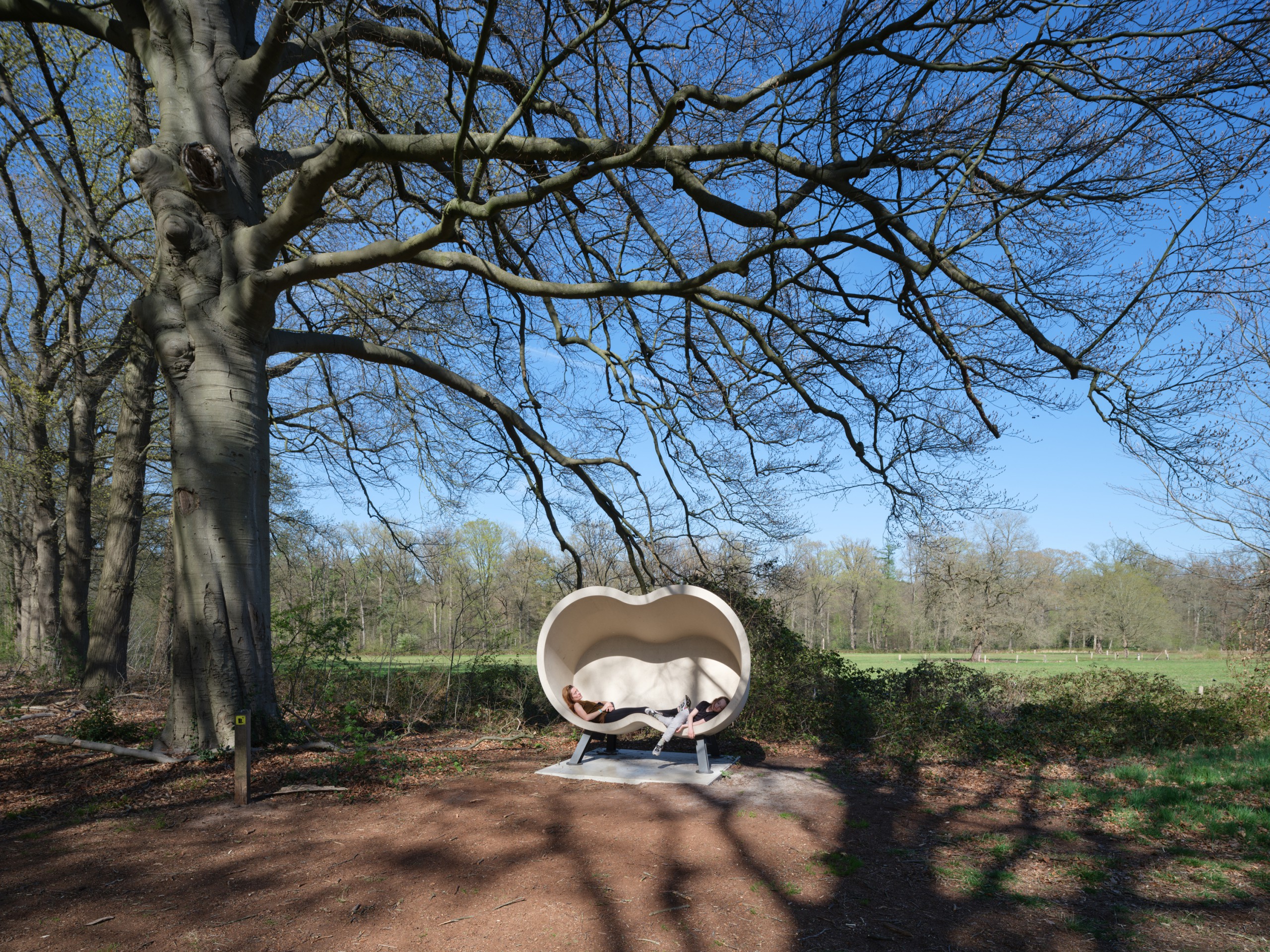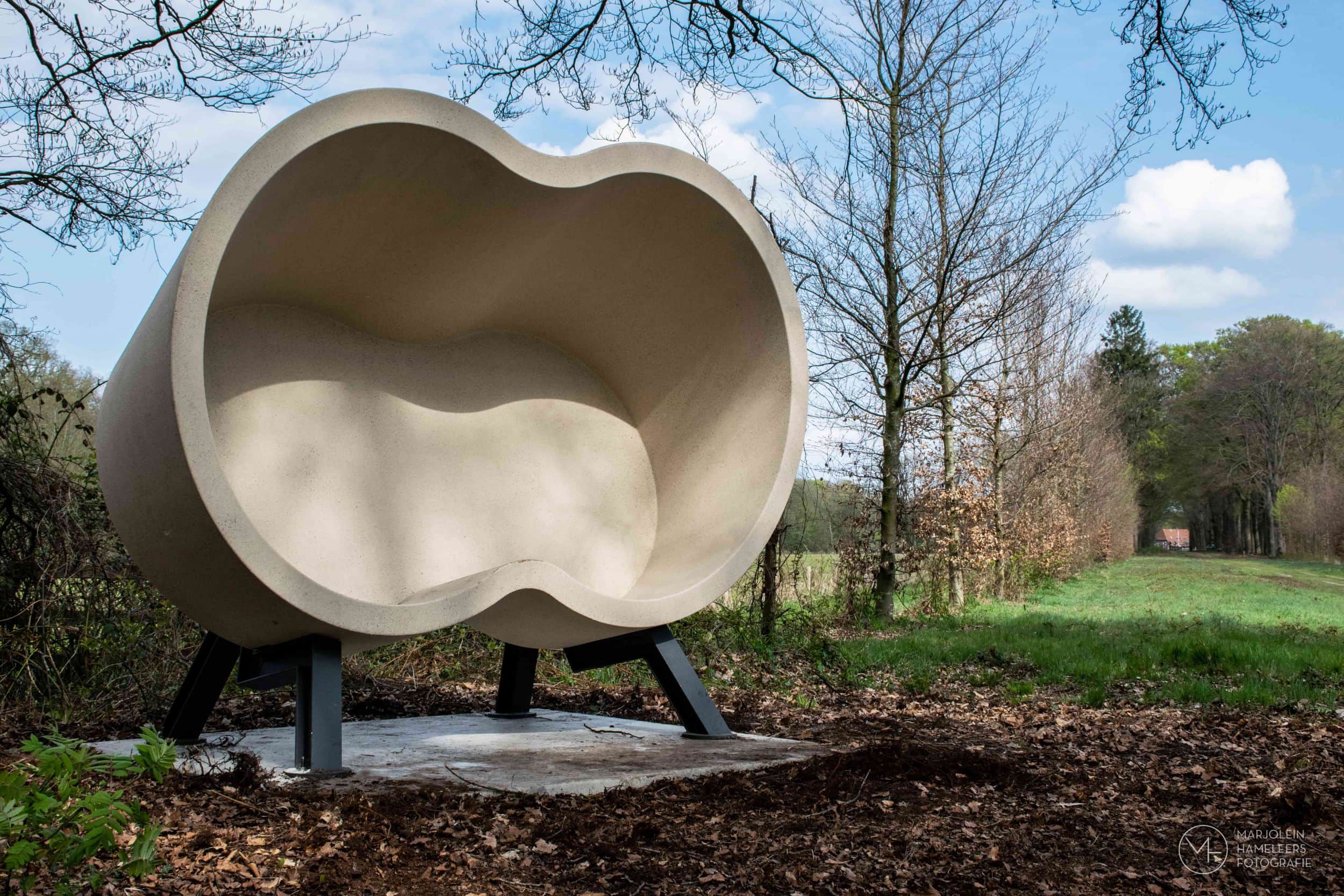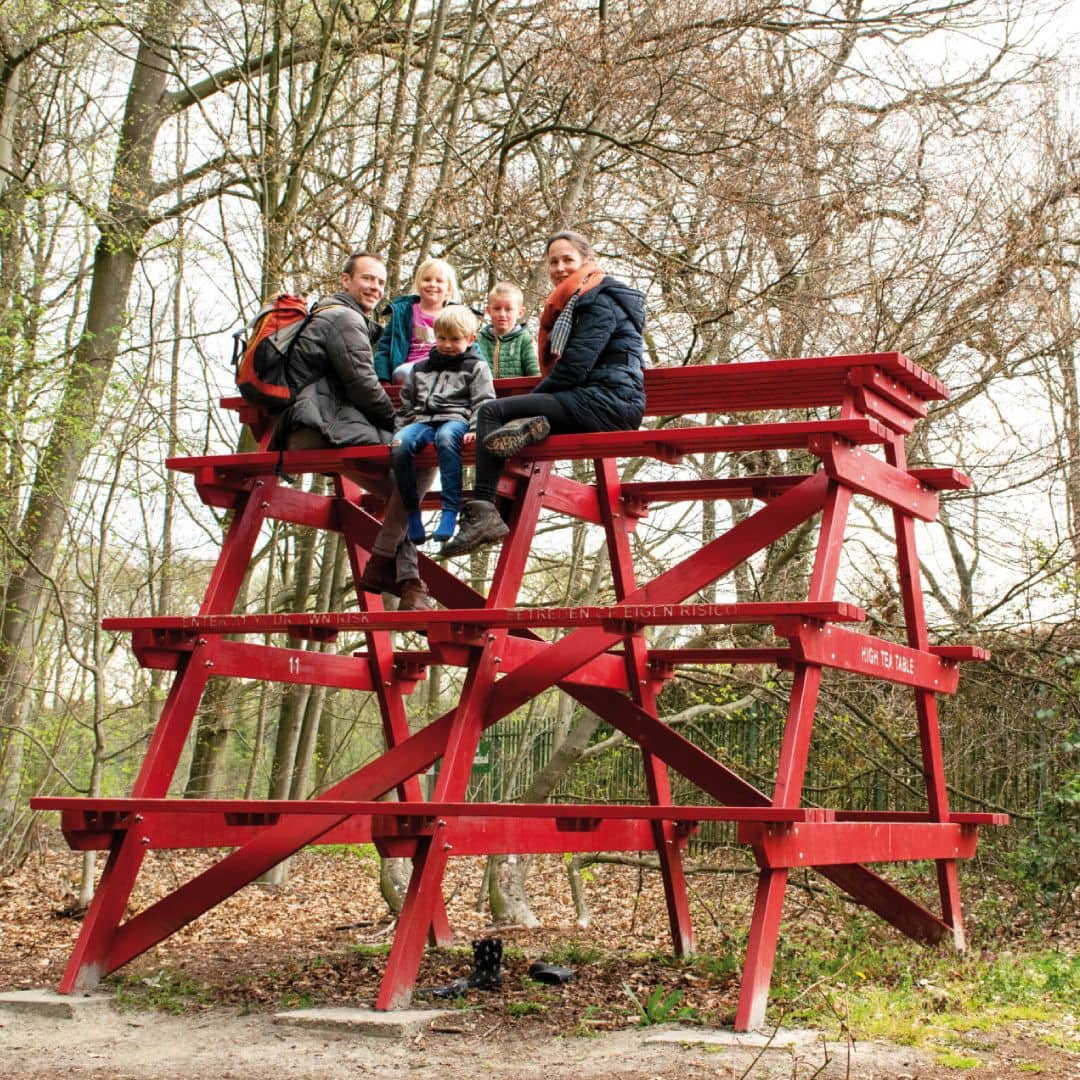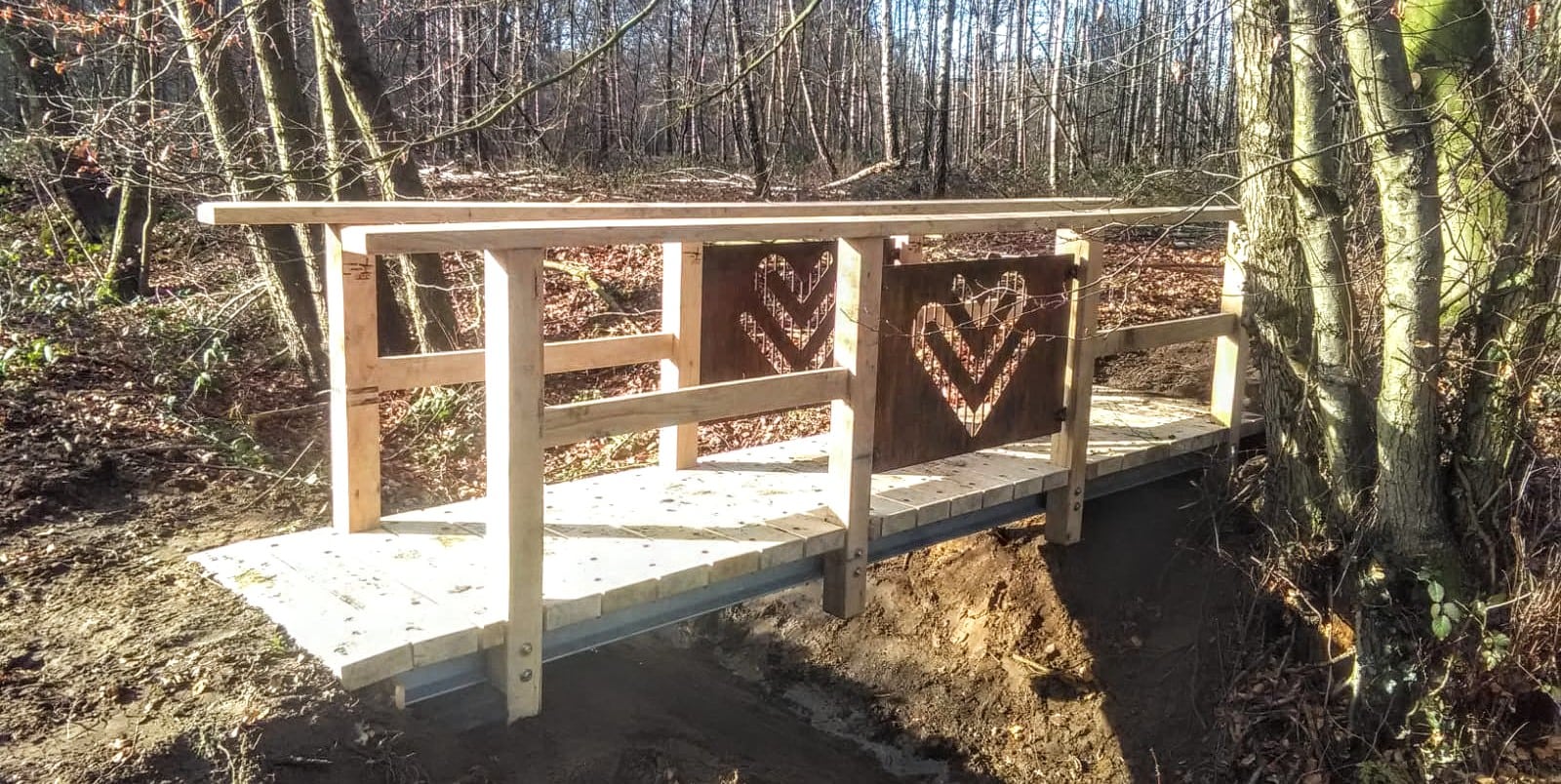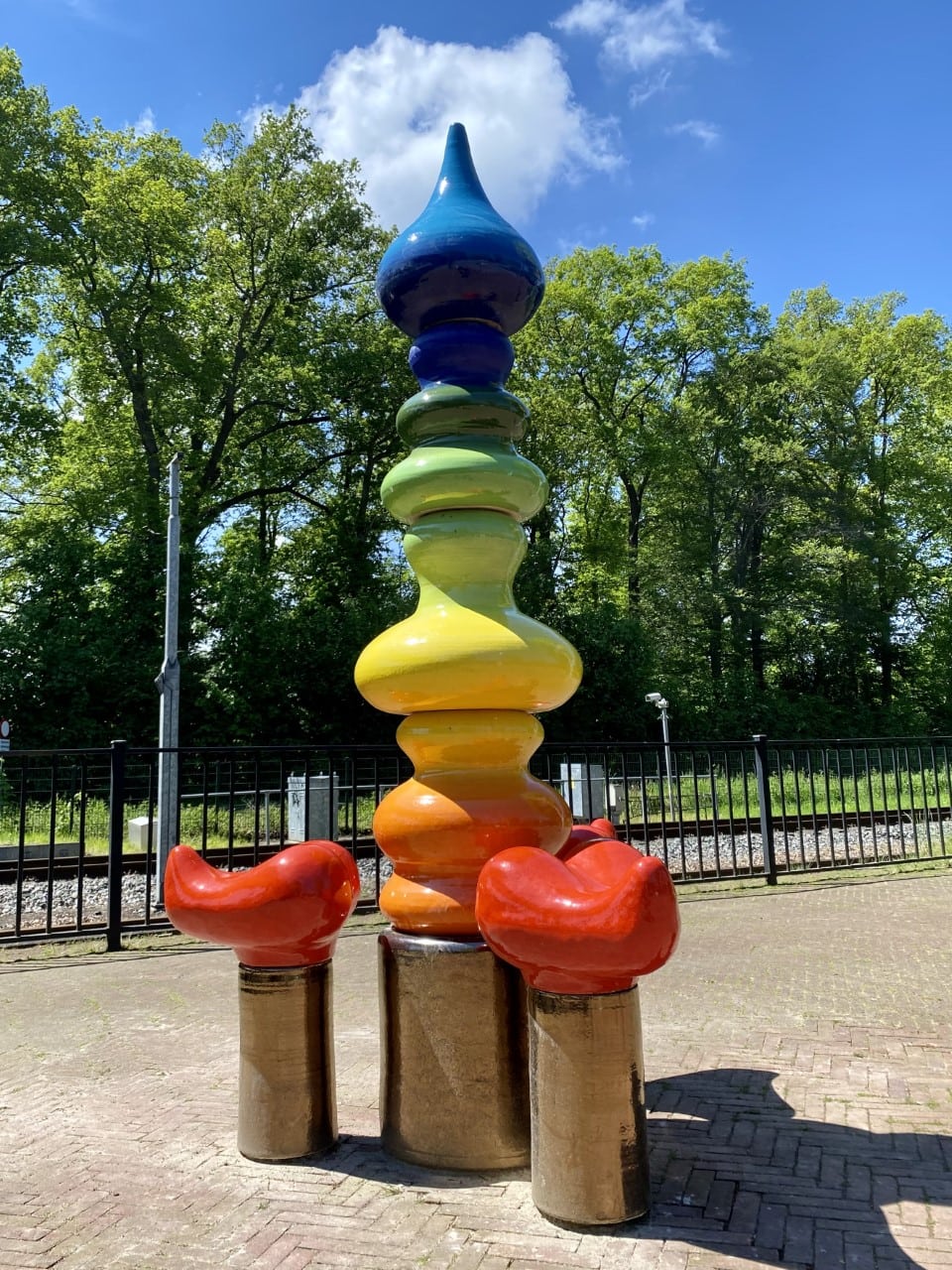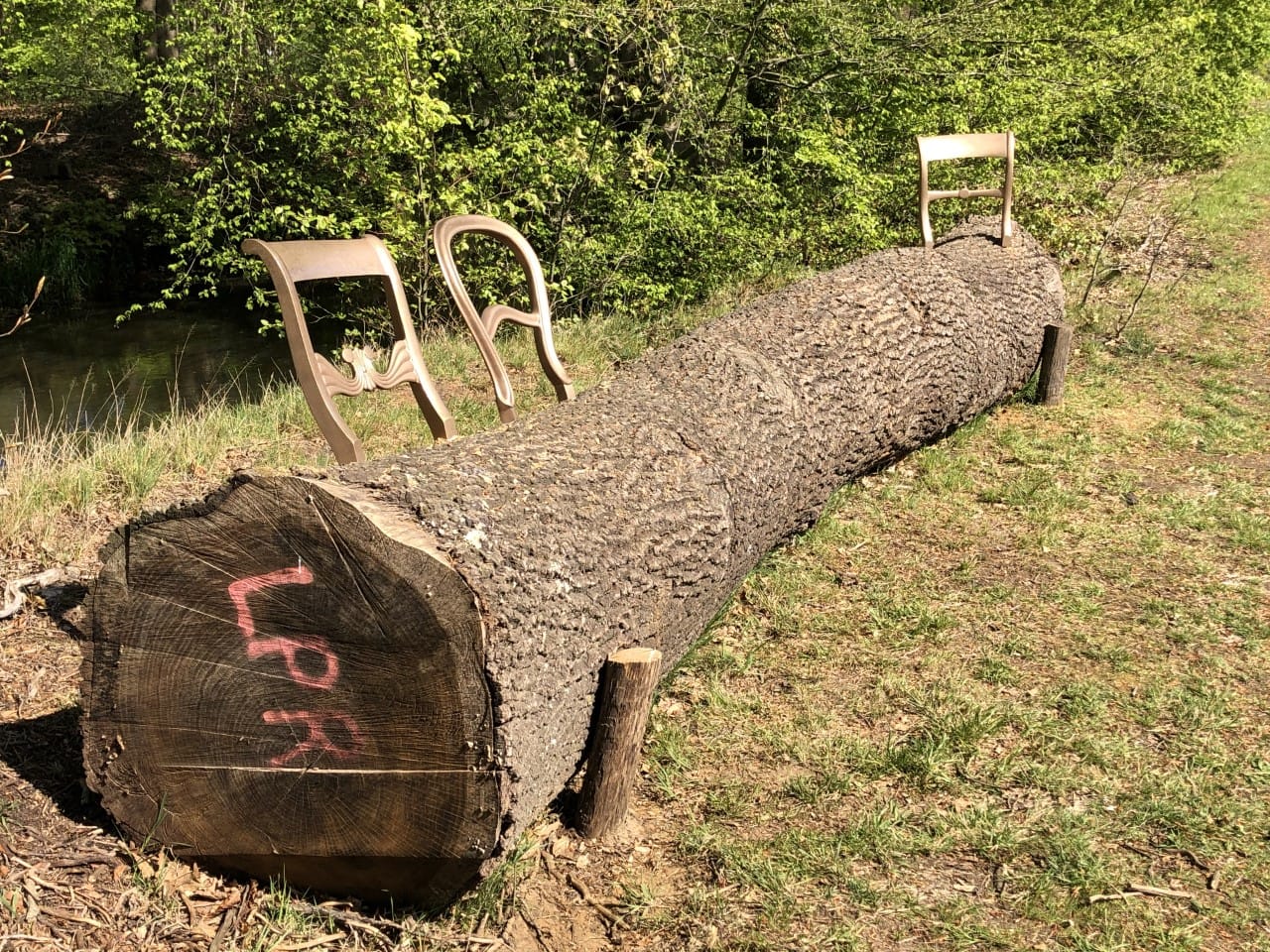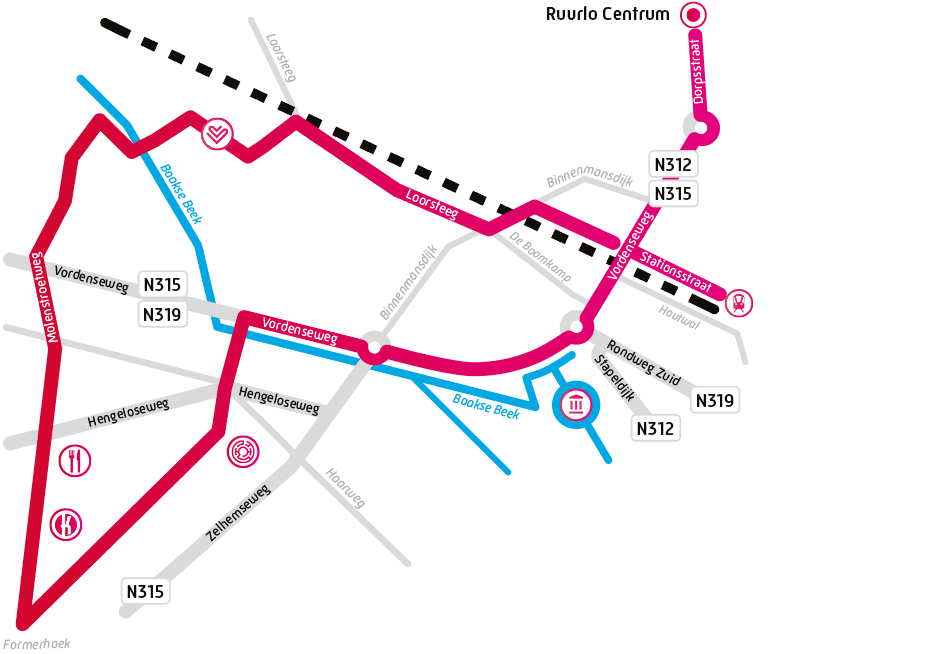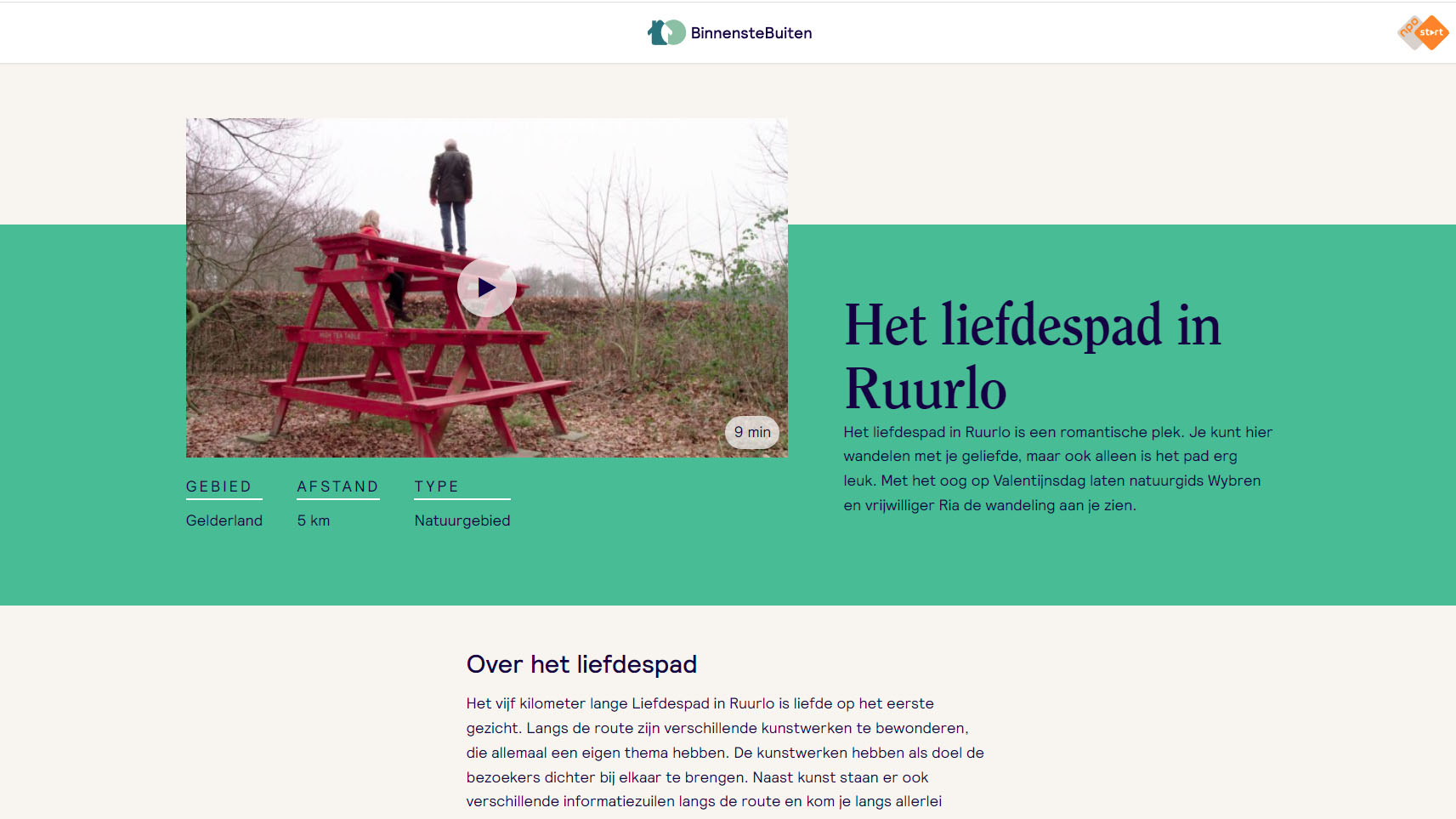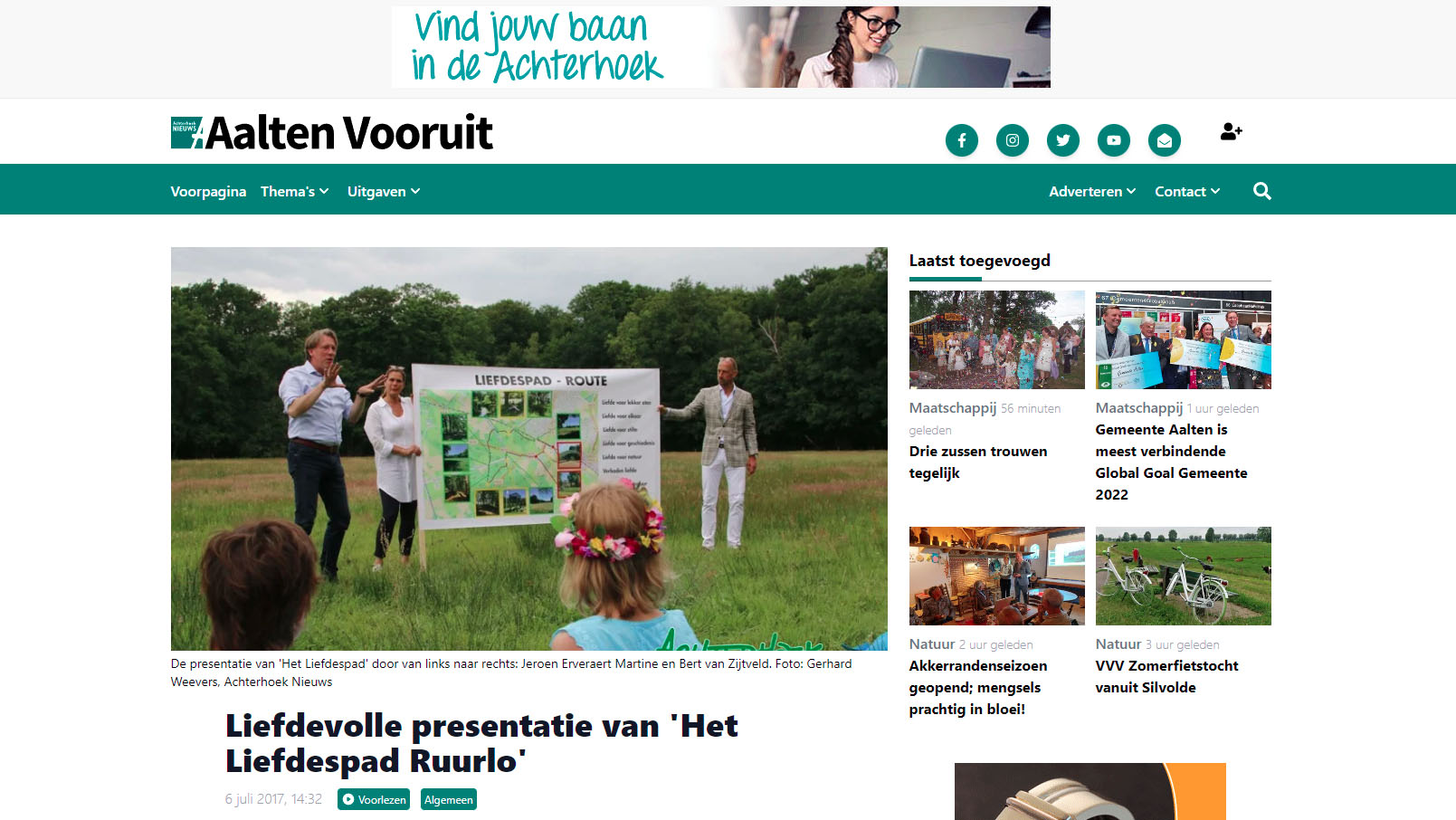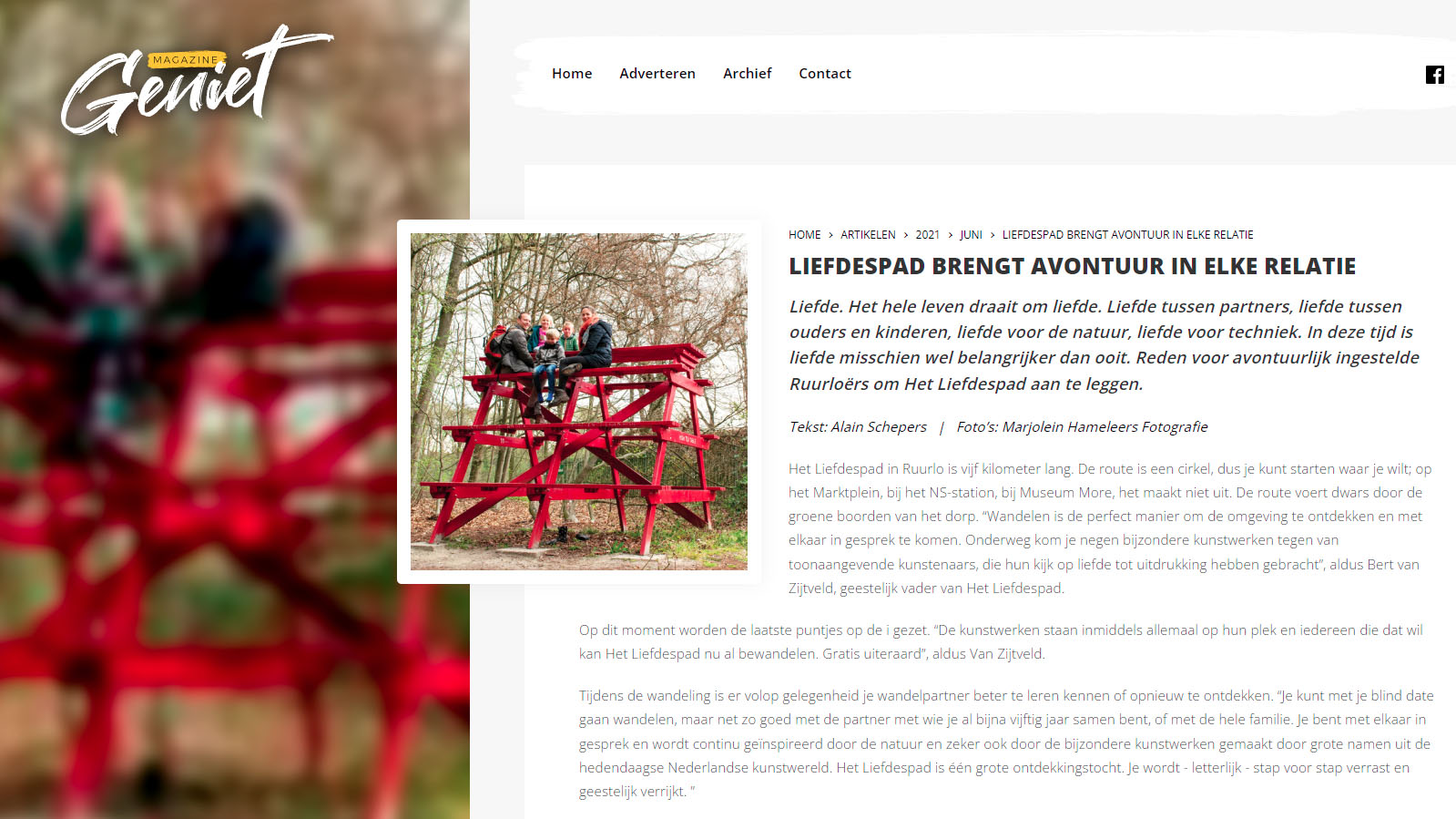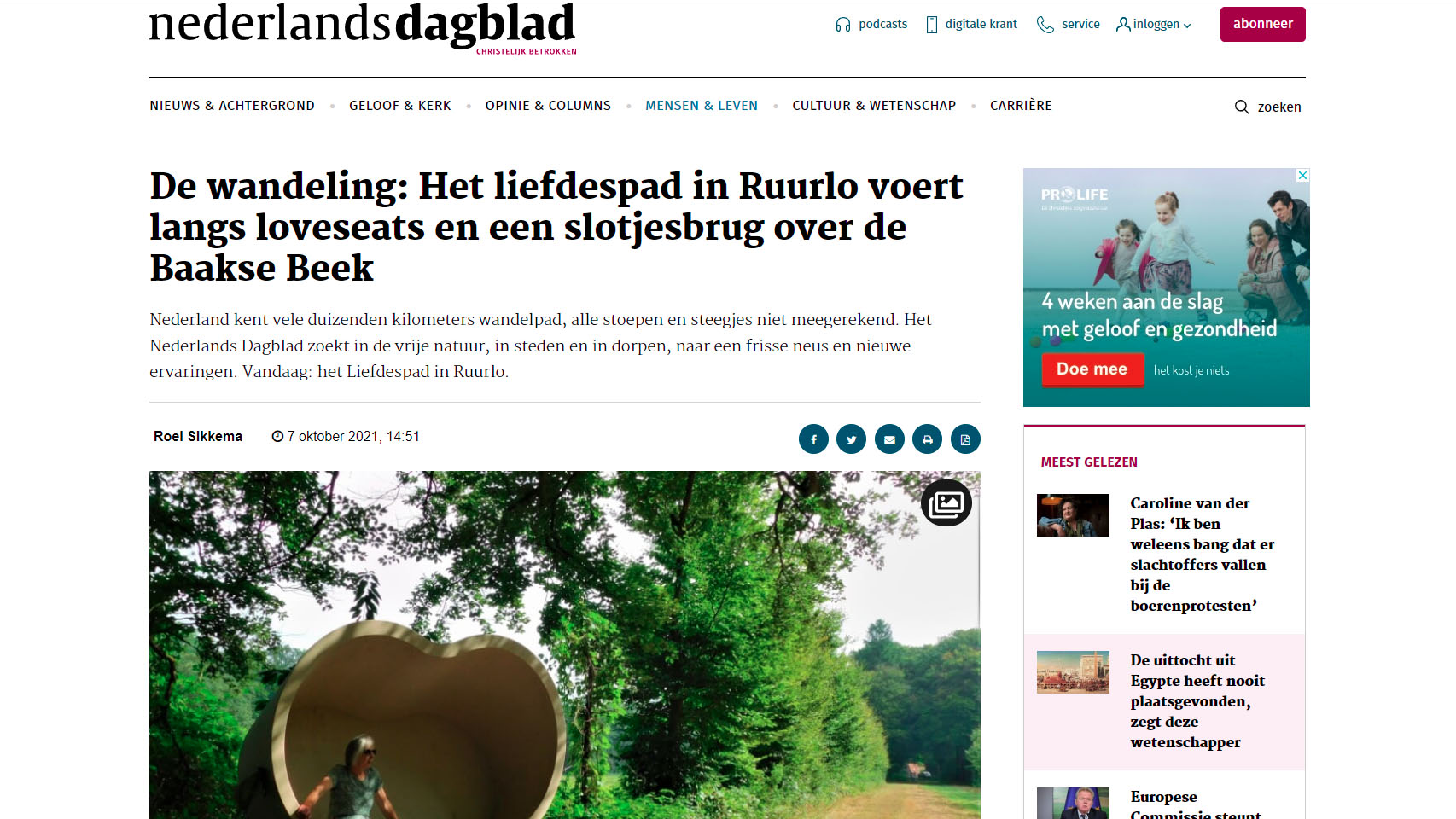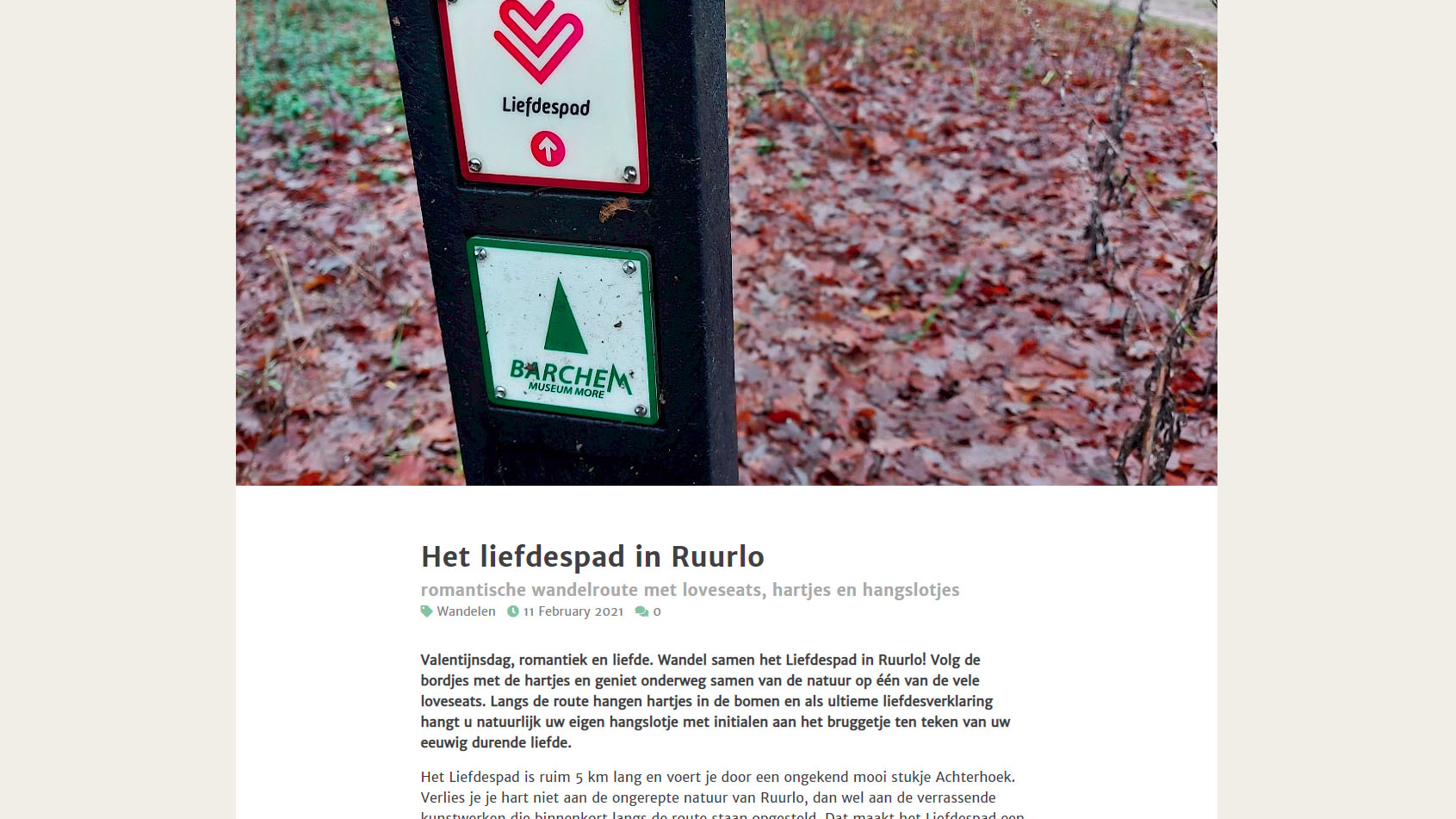In the media
Ruurlo is small city in one of the most beautiful parts of the Netherlands, the Achterhoek. In the midst of woods and fields lies pancake restaurant Heikamp, where Bert van Zijtveld is in charge. He developed the adjacent Klimbos and came up with the idea of a Liefdespad (Path of Love).
The Liefdespad is a five-kilometre-long circular walk that, as the name suggests, is dedicated to love. The path meanders along beautiful views, past streams, flower fields, a grain field (for the beer that the Heikamp brews) and Museum MORE, through stately beech-lined lanes and past romantic spots. There is plenty to see and do – and thus to experience – along the route. The path links locations with very diverse functions and qualities.
The initiators are local entrepreneurs who are eager to share the special experiences available in their region with visitors.The people behind the Liefdespad believe that the area has tourist potential and deserves more visitors: love from near and far. Foundation Het Liefdespad also wants to put the region on the map as an attractive place to live and work. This initiative is one of the ways to achieve this.
The idea is to focus on love at various places along the walk, with ‘love’ broken down into different themes. Many of these themes have a link with some local quality. There is love of the landscape, love of good food and drink, love of water and love of technology. Love for other people is not left out, either: love for family, great loves, self-love. For every kind of love, a reflection point has been designed along the route: a place to stop and reflect on that particular kind of love.
To further the design, Mothership was asked to find artists who would attract (inter)national attention, ask them to design at least 12 loveseats and then place them along the route.
These special seating objects mark the path and can be used by walkers to get closer to each other and to nature. Dot on the horizon is an activity programme that, taking place around the route and the loveseats, invites repeated visits, new encounters and special experiences.
Exploration and Selection
Although the basis for the Liefdespad had already been laid, Mothership was responsible for its further development. As always, we started with an exploration of the area and a study of the history of the place. What are likely starting points, which story is worth telling and which parties are important to the path? Where does which theme fit? What places along the route need to be highlighted?
Mothership discovered several beautiful locations that could be linked to the various themes: in the woods, at the edge of the grain field, along the Baakse Beek, near a solitary tree, at a special viewpoint and on a little hill. On the basis of the features and possible stories of these places, we went looking for suitable artists and designers: people capable of emphasizing the qualities of locations in works of art that depict themes, or that can make works of art in which there is room for the story of the location.
We first compiled a longlist of 20 artists and then selected the first six artists and designers in consultation with the client. We linked these artists to a location and a theme, to inspire their location-oriented design. In a briefing, we set out the requirements and the key points of the assignment as they emerged from our research. The works had to be attractive objects that either blended harmoniously into nature or stood out from it; the main focus was that the works had to surprise and invitefurther exploration.
Occasionally, we asked artists to use specific designs that had been executed previously, because these were so perfectly suited to a specific place.
The themes that inspired the designs were location-oriented. This way, the qualities of the region would be portrayed and the complex would form a unique platform: a breeding ground for ancient traditions and stories to grow into new (cultural) rituals. And as the contemporary storytellers that we are at Mothership, we know how important it is to develop new stories from ancient traditions. In this way, new generations and tourists from outside the region can also learn from that history.
Partners in Content
Several stakeholders, including the Water Board, Staatsbosbeheer, the municipality and local entrepreneurs, contributed to the construction of the path either financially, with manpower or in kind. These partners also indicated their wishes for the Liefdsepad and thus also contributed to its content.
Mothership makes sure that the location, story, artist and supporting party are connected in the best possible way, for instance by selecting locations that fit particular stakeholders.The involvement of these parties in the Liefdespad is really visible: the Water Board adopted a loveseat by a stream; Staatsbosbeheer provided the wood for a loveseat in the forest. For the construction of the loveseats, we found local entrepreneurs who could provide the required quality.This way, the seats were truly linked to the region as well as the result of joint, largely local, efforts.
Impact
The intention of the Liefdespad is to attract tourist guests to the region. The seats that mark the interesting locations are crucial in this respect. Adding the work of well-known artists or designers to the area’s natural beauty has resulted in a unique route. Communication will prove to be of great importance in the coming years. The Liefdespad has to be communicated to various target groups in a way that ensures a growing number of visitors.
These visitors will undoubtedly share photos of the unique loveseats on social media. Our experience with similar projects shows that this is a guarantee for reaching a large and wide audience. The photos of the loveseats will travel the world and this will tempt tourists to come and see and experience what the Liefdespad can mean to them.



